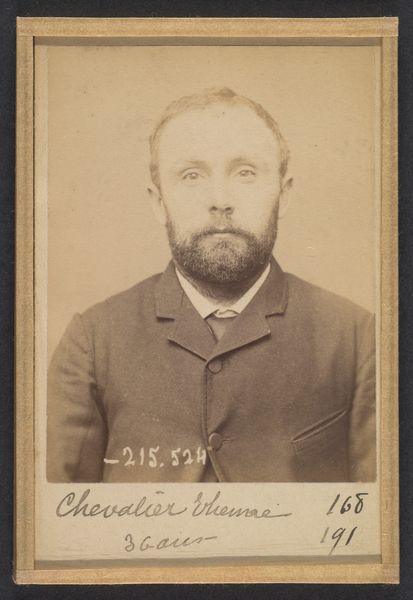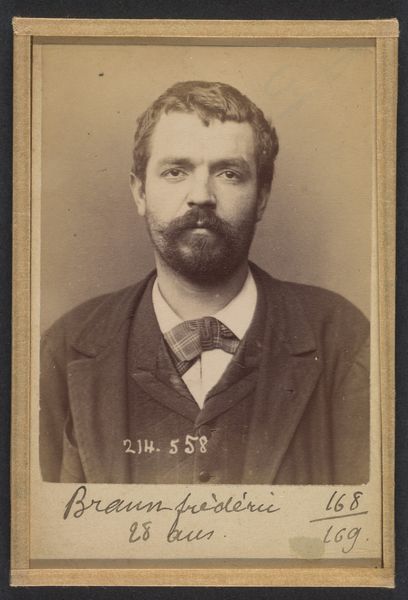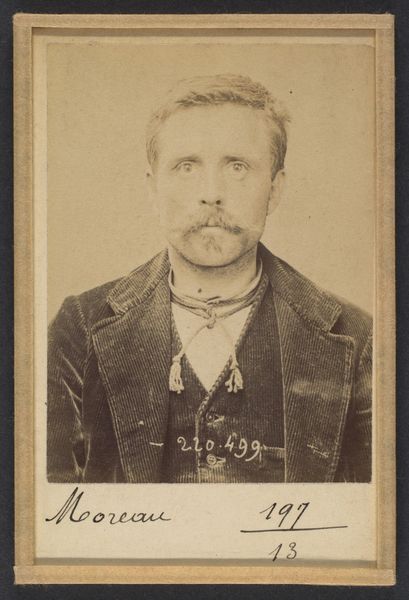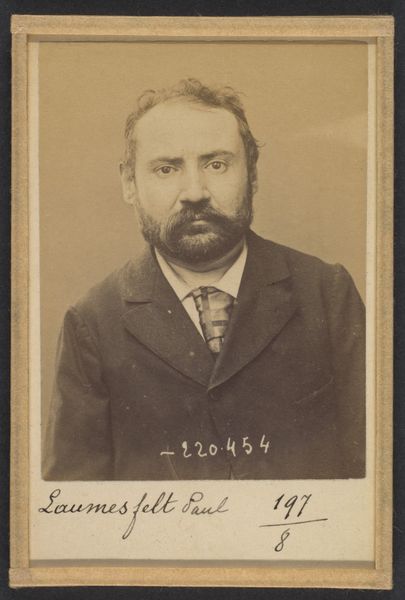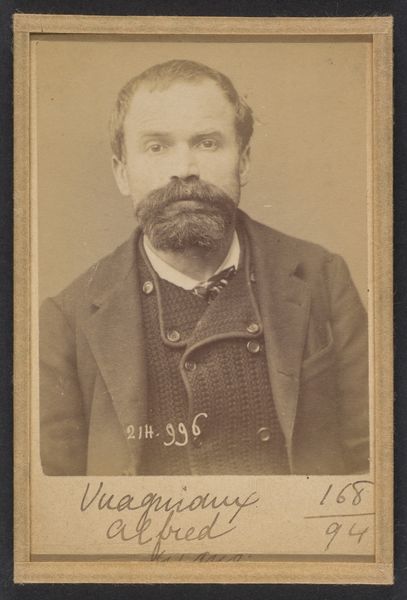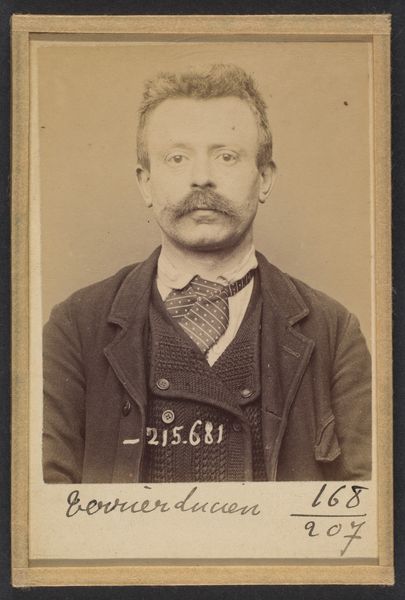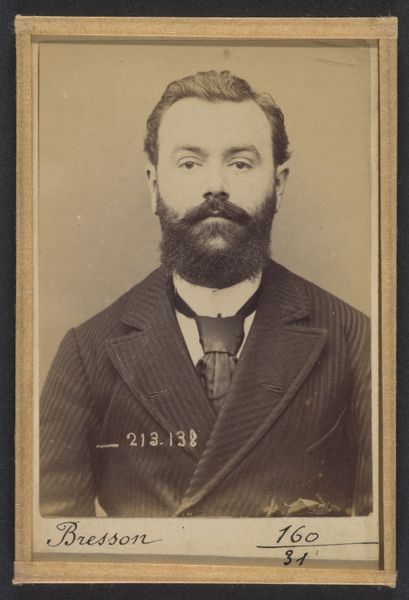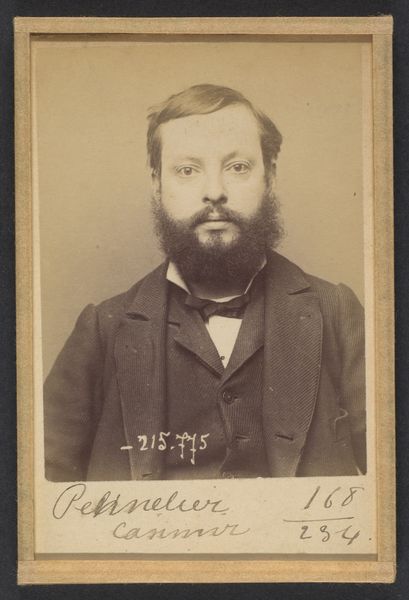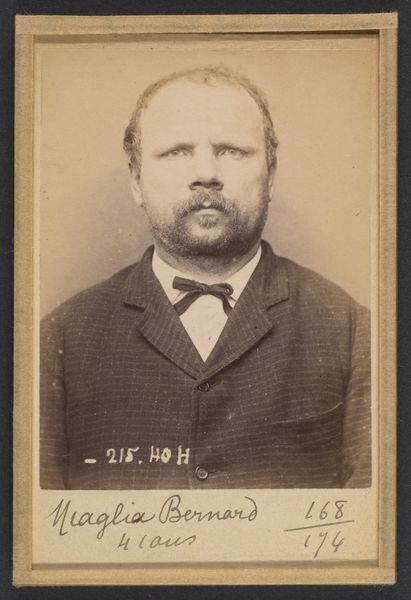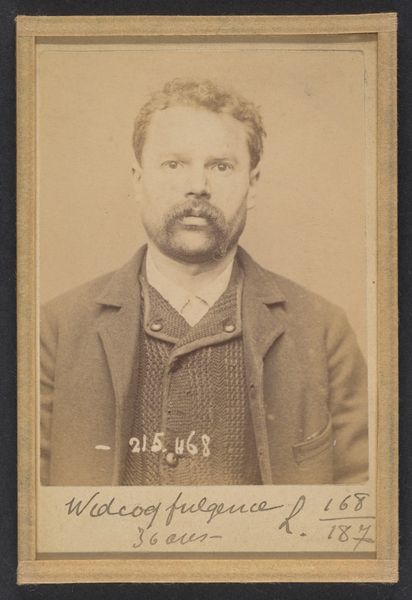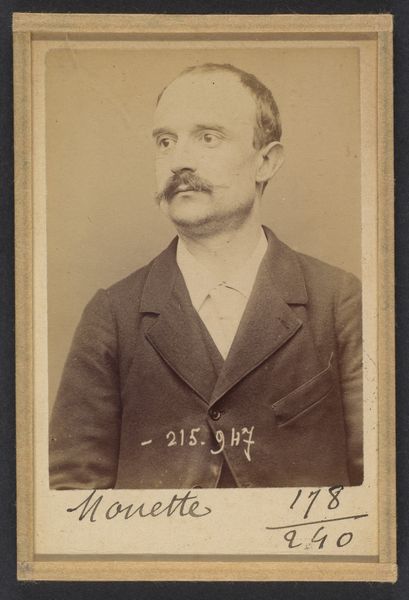
Surgand. Alphonse. 21 ans, né à Lyon. Réparateur de chaussures. Anarchiste. 4/3/94. 1894
0:00
0:00
photography, gelatin-silver-print
#
portrait
#
portrait
#
photography
#
gelatin-silver-print
#
modernism
#
realism
Dimensions: 10.5 x 7 x 0.5 cm (4 1/8 x 2 3/4 x 3/16 in.) each
Copyright: Public Domain
Curator: Today, we’re looking at a gelatin-silver print created in 1894. The artwork is titled “Surgand. Alphonse. 21 ans, né à Lyon. Réparateur de chaussures. Anarchiste. 4/3/94.” It’s a portrait by Alphonse Bertillon. Editor: He looks... nervous. Almost comically so. Like he’s just been caught doing something he shouldn’t have, but he’s also trying to maintain some semblance of composure with that bow tie. Curator: Right. The context here is critical. Bertillon developed the “Bertillonage” system of criminal identification, a precursor to fingerprinting. This image is a mugshot, essentially. Surgand was an anarchist arrested in Lyon. Editor: Ah, that explains the anxiety. Though, knowing he was an anarchist adds a layer of intrigue to that slightly rebellious twinkle in his eye, doesn't it? It’s like he’s thinking, "Yeah, I got caught…this time." Curator: Exactly! And Bertillon’s method was rooted in scientific positivism. He believed physical measurements could objectively identify criminals, an idea laden with issues of surveillance, social control, and the criminalization of marginalized groups, particularly political dissidents like Surgand. Editor: There’s a peculiar intimacy to it despite the clinical purpose. The sepia tones give it an antique, almost romantic feel, yet the man's gaze is so direct, so uncomfortably present. It feels less like documentation and more like a captured soul, pinned and labeled for eternity. I wonder what Surgand would think, seeing his younger self framed and gazed upon today. Curator: He would likely be critical of the use of his image as part of a system that historically targeted and oppressed people like him. We need to recognize the inherent power dynamics in these images. Bertillon was part of a system of authority. Surgand was someone deemed a threat to it. Editor: That somber feeling is creeping back in. So what looked like a goofy portrait is a reminder of injustice. It is a strange twist, and makes the work much more powerful and uncomfortable. Curator: It's about engaging with the art in its proper context so we don’t repeat mistakes. Editor: Right. And in art, and in life, every seemingly simple image has a story, and perhaps, some uncomfortable truths lurking underneath.
Comments
No comments
Be the first to comment and join the conversation on the ultimate creative platform.
